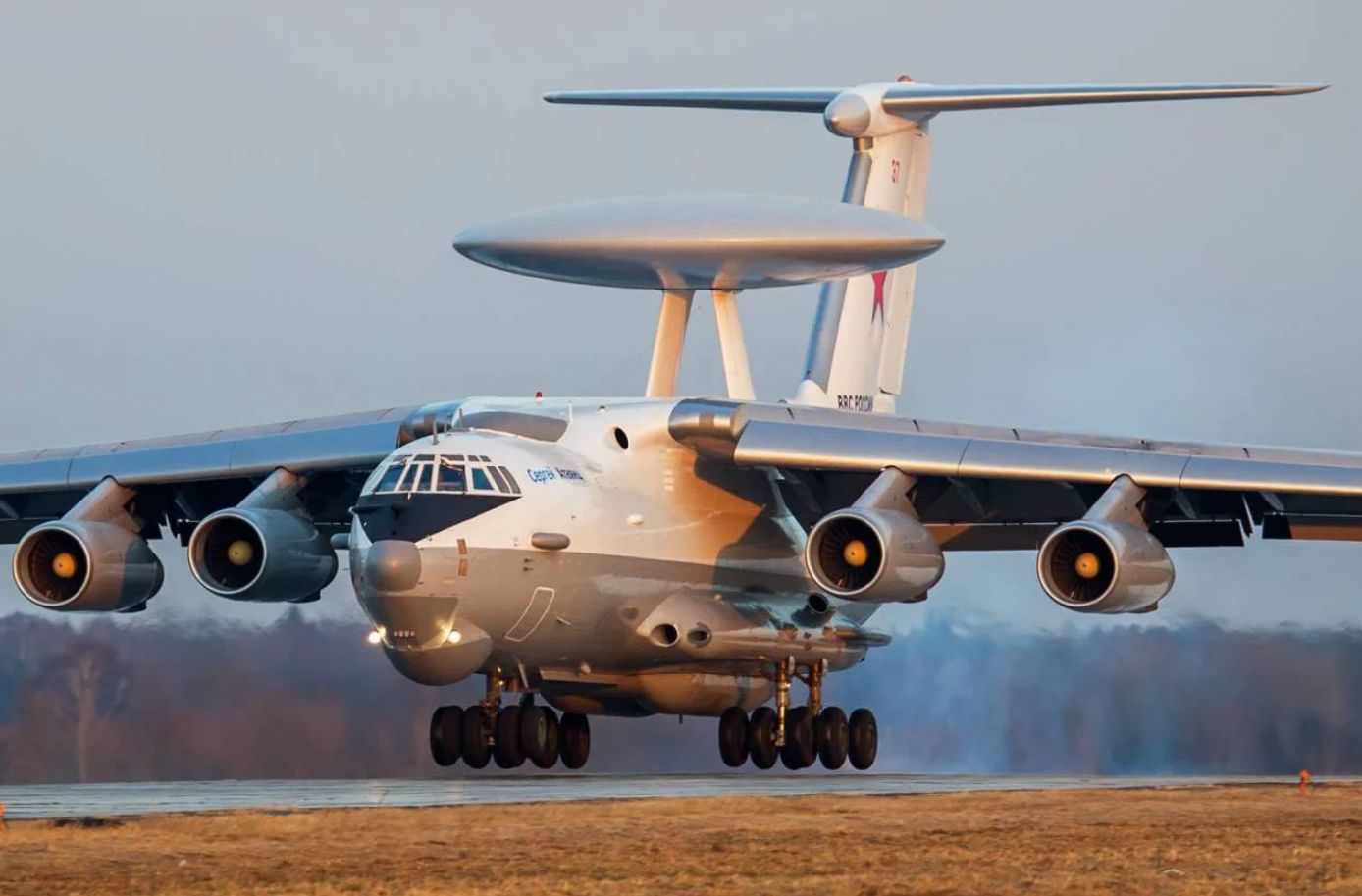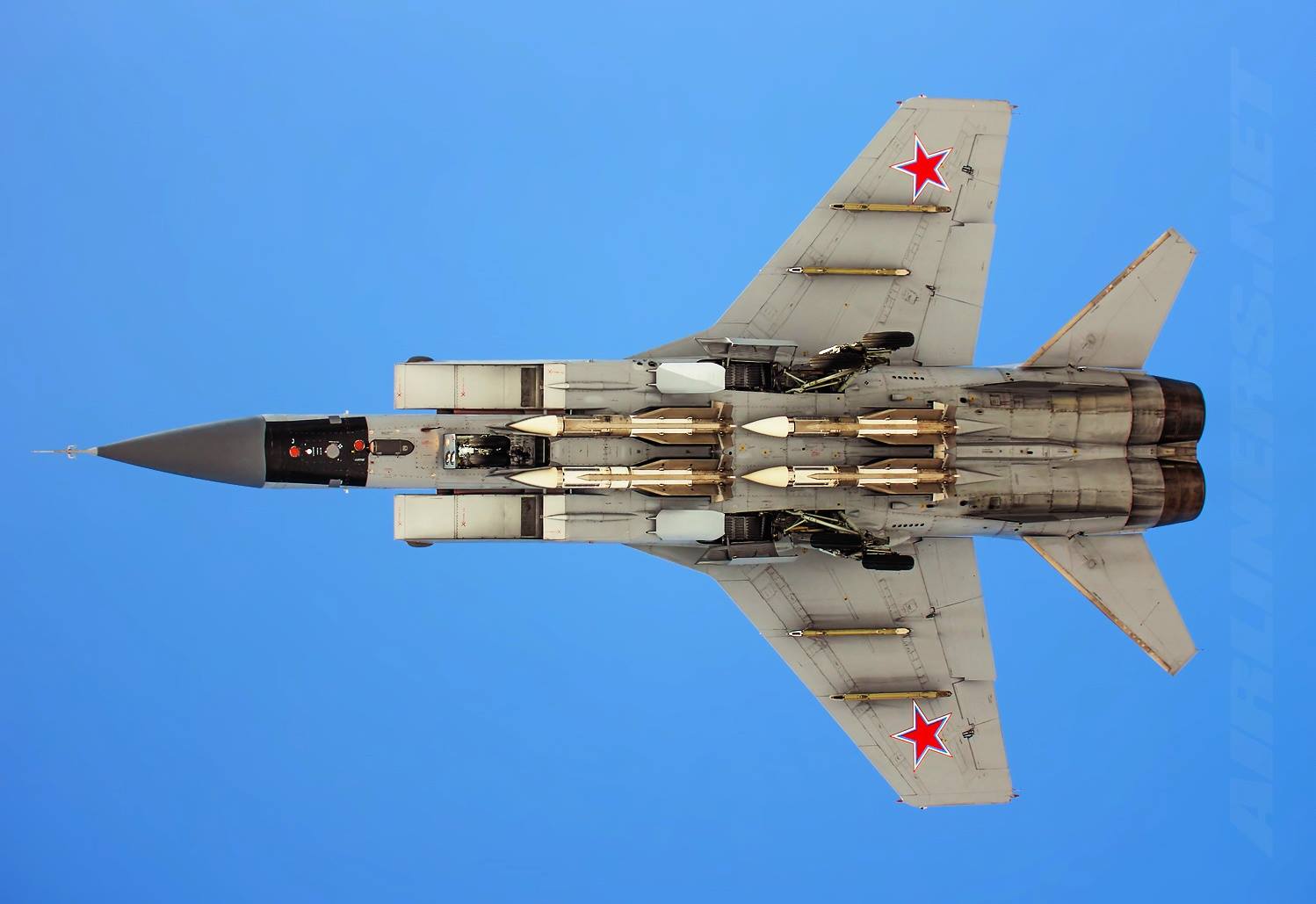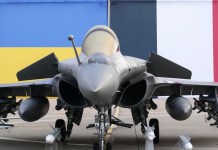Days after a Russian A-50 Beriev (Mainstay) early warning aircraft came under attack by an unmanned aerial system (UAS), a new set of claims regarding the contentious attack—which may have dealt a blow to Russia—have been made in a latest UK intelligence update.
On February 26, a Belarusian partisan group BYPOL, aligned with Ukraine, claimed an attack on the Machulishchy Air Base located south of Minsk.
“One of the nine AWACS of the Russian Aerospace Forces worth $330 million (was destroyed),” said a statement attributed to the group.
In the incident’s aftermath, satellite images suggested that the aircraft had escaped unscathed. At the time, EurAsian Times reported that while the plane was not destroyed, the aircraft’s radome and sections of its right wing appeared to have taken the hit.
A few days later, in a video released by BYPOL on March 2, a drone was eventually seen approaching the A-50U parked at the airbase. A longer video was also uploaded to YouTube later that day, which was particularly significant as it showed the drone lifting off after landing on the A-50U.
However, a new intelligence update published by the UK Ministry of Defense (MoD) seeks to clarify the impact of the alleged drone attack, which remains under investigation.
The British intelligence update published on March 9 stated that Belarusian President Alexander Lukashenko admitted earlier this week that one of Russia’s A-50U airborne early warning and control aircraft deployed in Belarus had been damaged.
The assessment also noted that the A-50 Mainstay was “almost certainly attacked by a small uncrewed air system.” This assertion aligns with the evidence collected by the Belarusian security agencies, who found a bag with drone control panels.
The British intelligence report speculates that the Mainstay may have now been sent to a repair facility in Taganrog, Russia. It further states that the transit flight was conducted at a lower altitude than usual, most likely due to damage to the pressurized cabin.
Two days after the alleged drone attack on the A-50 took place, British Intelligence had predicted that “the loss of an A-50 Mainstay would be significant as it is critical to Russian air operations for providing an air battlespace picture.”
The latest British intelligence update claims: “It is a realistic possibility that joint Russo-Belarusian air activity will now be forced to rely on ground control and fighter escort until another Mainstay can be deployed.”

Would The Damage Impact Russo-Belarusian Ops?
The most intriguing part of the British intelligence report is the assertion that the A-50 Mainstay was likely being used to provide situational awareness to the MiG-31K Foxhound fighter aircraft equipped to launch the AS-24 Killjoy air-launched ballistic missile.
Russian MiG-31K, which carries the Kinzhal or the AS-24 Killjoy hypersonic missiles, also operates from Machulishchy, where the A-50 was attacked.
A Russian A-50 Mainstay Airborne Early Warning System and two MIG-31K Foxhound fighters were seen leaving Machulishchy Air Base in Belarus on January 19. Both aircraft participated in joint Russian-Belarusian air drills that concluded on February 1.
This paved the way for the speculation that the A-50 was assisting the MiG-31.
The British intelligence update claims that the inbuilt radar of the Foxhounds was removed during the modification to balance the airframe, leaving pilots dependent on external sources of situational awareness, such as the Mainstay.
EurAsian Times reported that at least three MiG-31 fighters were stationed in Belarus. The departure of these aircraft capable of firing hypersonic missiles from Belarus late last year sparked concerns in Ukraine about another aerial raid over its cities.

However, the Ukrainian Air Force spokesperson, Yuri Inhat, announced they did not pose any serious threat. The Russian or the Belarusian Defense Ministry has not commented on the UK intelligence update.
However, a military expert and Indian Air Force veteran Squadron Leader Vijainder K. Thakur, who has been keenly watching the war, dismissed the British Intelligence report.
Thakur told EurAsian Times, “@DefenceHQ assiduously projects Ukrainian success as evidence of the incompetence of Russian military leadership and poor training of Russian soldiers, when in fact almost all Ukrainian achievements can be attributed to the non-stop streaming of actionable intelligence to Ukrainian forces by US/NATO aerial ISR assets, such as E-3 AWACS & E-8 JSTARS.
“The aerial assets track Russian ground & airborne forces 24×7 to an astounding granularity – from small vehicles, groups of soldiers, to the smallest UAVs. Thousands of Western operators then analyze the data to generate actionable intelligence.
“The A-50 operating from Belarus likely provided situational awareness to all RuAF air dominance fighters, including MiG-31BM. The Kinzhal-armed MiG-31K can operate with or without A-50 support as it attacks static targets at fixed coordinates. Without A-50, the MiG-31BM can provide limited situational awareness to RuAF Su-35S & Su-30SM fighters flying air dominance patrols taking advantage of its cruise height and powerful Zalson radar,” Thakur said.
Notably, British “revelations” come after the Russian military carried out a massive missile attack on Ukraine. The troops in Moscow employed 81 missiles of several types, including Kinzhal hypersonic missiles, to strike targets inside Ukraine.
Russian officials and media have accused Ukraine and affiliated groups of conducting concerted drone attacks inside its territory. These attacks have registered a noteworthy uptick in the last few weeks.
The Russian A-50, supposedly, was just one of the targets that were struck with some success.
Russian troops used the territory of Belarus to roll into Ukraine from the north on February 24 last year. If the damage has impacted the Russo-Belarusian operations on the A-50, it could encourage the Ukrainian troops, who have never ruled out a potential Russian attack from Belarusian territory.
- Contact the author at sakshi.tiwari9555 (at) gmail.com
- Follow EurAsian Times on Google News




